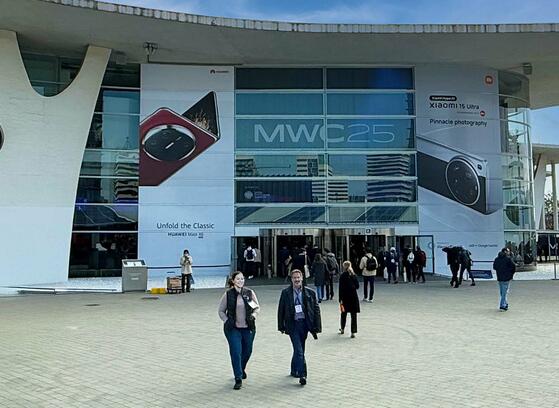 The latest on future from 5G Forum USA 2016 in Palo Alto, CA.
The latest on future from 5G Forum USA 2016 in Palo Alto, CA.
Thinking back to last week's 5G Forum USA 2016, I put together a blog post on what I learned and what I thought would be most interesting to our readers beyond the myriad of daily news on the “road to 5G” topic.
We live the era of “5 G talk” — everything, everywhere and any time. But to be fair, the “talk” has lately become more defined with clearly agreed on 5G requirements and use cases. By now, we all are aware of the three main uses cases: the explosion of the mobile broadband with highly dense users' crowds requiring massive data volumes with peak data rates more than 10Gbps in indoor walking environment as well as 500kmph mobility, critical MTC with 99.99% reliability and availability at less than 1ms RAN latency needs, and massive MTC with up 100 times more connected devices working remotely with more than 10 years battery life.
3GPP also scheduled releases and a timeline; Rel13 and 14 cover LTE-Pro which also addresses some 5G centric aspects in the spectrum below 6GHz (e.g. massive MIMO, higher order modulation). Rel15 is expected to come by 2018 with the first new radio methods for spectrum beyond 6GHz and Rel16 to be accepted by IMT2020 as the first 5G release (December 2019) supporting the coexistence of licensed, shared and unlicensed spectrum to fully leverage 4G investments for a phased 5G with significant cost and energy efficiency improvements.
With that being said, we have to reckon that there are still open and very challenging topics related to new business models and new revenue streams. At 5G Forum USA, we learned that 5GAmericas is leading the way in the USA with the 5Cs initiative (connect, communicate, collaborate, cooperate, contribute) to work with groups around the world to answer these challenges. And just to mention a few of the efforts to answer these questions: shifting operators' thinking towards user/industry centric network (e.g. network slicing), “uberization” for open innovation and barriers removal, as well as looking outside the domain of licensed network operators.
Now, let me just briefly share what operators and vendors talked about……
Vzw is pushing hard on 5G involvement — they are going to have 5 tests beds for mmW channels at 28GHz and are very excited about the opportunity of new spectrum availability, licensed, un-licensed, and shared. AT&T continues, at a fast pace, their NFV/SDN strategy as part of the new 5G architecture, while T-Mobile is taking their time with research and preparations for their readiness whenever the right time comes. CMCC is a strong believer in exploiting the present networks with big data analytics to diagnose and act in the network at near real time (15min) while in parallel leading various standardization activities from 3GPP to IEEE for the new 5G architecture and RAN, from their first trials with the “brick” antenna prototype to replacing CPRI protocol, which becomes obsolete within the 5G vision of front haul and backhaul.
From the infrastructure vendors, Ericsson was present; most noticeable is their effort channeled to bring 5G to the right industries based on network slicing, which relies on RAN virtualization for which mobile edge computing can be crucial due to real time requirements, as well as on core network virtualization, which is the key to a common network platform enabling ICT transformation. Ericsson also mentioned their research and trials with studies covering advances in mmW propagation with beamforming and steering for reduced interference, multi-user and distributed MIMO with multi-site connectivity, control and user plane separation, just to list a few.
Anyhow, two topics caught my attention (…okay, three, but the latter is about the spectrum, and I guess we all know about the availability at frequency above 20 GHz to be used in test beds trials, but maybe not of urgent interest right now since it regards mmW, high capacity and speed at short range usage planned for Rel15 and beyond; then 3.5GHz as well as the possible forthcoming 600 MHz bands of high interest because they are going to be used for LTE-A/Pro…)
Coming back to the other two topics: IoT and NFV/SDN. As we all know, IoT disguised as Machine to Machine has already existed for quite some time now, but what really connects it today with 5G,or as a better way to say it is that it requires 5G existence, is the need for massive connectivity, remote long time operability requiring a battery life of 10 years, as well as mission critical latency of less than 1ms. In addition, IoT offers the very first business models for 5G, such as the system integration of the various verticals into the open platforms offered by operators. We see this happening already in the USA with Vzw, AT&T, as well as Europe with Deutsche Telekom, Orange, Vodafone and others working with various verticals such as healthcare, automotive etc. How these models will prove to work and what would be the revenue sharing between the operators, the connectivity providers, and the verticals, we have to wait and see….. But so far IoT can happen without waiting for 3GPP NB Iot and / or 5G for now.
The other topic, NFV/SDN, which to a large extent can be viewed as an enabler to 5G due to the automation and intelligence that virtualization facilitates, but also due to the opportunity which NFV/SDN creates for cutting opex/capex costs and therefore freeing budget to be used towards 5G deployments …. Very attractive, but more difficult done than said. First, the NFV/SDN functions of virtualization and orchestration are purely related to implementation, and therefore won't be standardized beyond what is going on in ETSI, which refers to core virtualization so far and it just defines a framework rather than specifications; so fairly free variable here.
Then, RAN virtualization at eNB level requires DPI access and fast processing in order to ensure that the virtualized resources scheduler won't crash and/or meets its performance requirements. The need of DPI is challenged by today's encryption trends, which also inhibits the feasibility of network intelligence that NFV is expected to bring. In addition, the use of Virtual Machines (VM) raises the question of how many can work in parallel, or should they better work multiplexed and if so how can this be optimally orchestrated… And then, can MEC (Mobile Edge Computing) be of help? So, another set of unanswered questions here also…..
That said, I would like to conclude my 5G Forum USA 2016 briefing with the reflection that virtualization viewed as an enabler of 5G requires intelligence implemented in the network with more or less the obvious effect of completely removing testing tools, but so far it is clear that parties like us proving multivendor network testing solution have to be around for some time in order for 5G to become a reality in the near or further away future……









